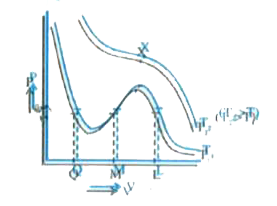A small amount of CaCO3 completely neutralises 525 ml of N10 HCl and no acid is left at the end after converting all calcium chloride to CaSO4. How much plaster paris (CaSO412H2O) can be obtained Solution in Telugu
1.916 g
5.827 g
7.53 g
3.81 g
The correct Answer is:D
Step by step video, text & image solution for A small amount of CaCO_(3) completely neutralises 525 ml of (N)/(10) HCl and no acid is left at the end after converting all calcium chloride to CaSO_(4). How much plaster paris (CaSO_(4)(1)/(2)H_(2)O) can be obtained by Chemistry experts to help you in doubts & scoring excellent marks in Class 12 exams.
Topper's Solved these Questions
- BOOK - AAKASH SERIESCHAPTER - STOICHIOMETRYEXERCISE - PRACTICE SHEET (ADVANCED) (MORE THAN ONE CORRECT ANSWER TYPE QUESTION)5videos
STOICHIOMETRY
- BOOK - AAKASH SERIESCHAPTER - STOICHIOMETRYEXERCISE - PRACTICE SHEET (ADVANCED) (LINKED COMPREHENSION TYPE QUESTION)2videos
STOICHIOMETRY
- BOOK - AAKASH SERIESCHAPTER - STOICHIOMETRYEXERCISE - ADDITIONAL PRACTICE EXERCISE LEVEL -II (LECTURE SHEET (ADVANCED) INTEGERTYPE QUESTIONS)5videos
STOICHIOMETRY
- BOOK - AAKASH SERIESCHAPTER - STATES OF MATTER EXERCISE - ADDITIONAL PRACTICE EXERCISE -PRACTICE SHEET (ADVANCED) (LINKED COMPREHENSION TYPE QUESTIONS) (PASSAGE- IV)2videos
STATES OF MATTER
- BOOK - AAKASH SERIESCHAPTER - SURFACE CHEMISTRYEXERCISE - Objective Excersice - 4 (ASSERTION (A)& REASON (R ) TYPE QUESTION)34videos
SURFACE CHEMISTRY
Similar Questions
Pevoxy linkage is present in
01:29View SolutionTwo formulal to calculate number of milli equivalkents (mlQ)
Numbr of miliequivalents =weightGEW×1000
Numbr of milliequivalents= volume in ml × Normality of solution
0.09 grams of dibasic acid neutralise 40 ml of N20 NaOH solution. Molecular weight of acid is02:09View SolutionThe volume (in ml) of 0.10 M AgNO3 required for complete precipitation of chlorine ions present in 30 ml of 0.01 M solution of [Cr(H2O)5Cl]Cl2 as silver chlorine is close to __________
02:45View SolutionAt a particular temperature and pressure for a real gas Van der Waal's equation can be written as:
(P+aV2m)(Vm−b)=RT

where Vm is molar volume of gas. This is cubic equation in the variable Vm and therefore for any single value of P & T there should be 3 values of Vm. Which are shown in graph as Q, M and L.
As temperature is made to increase at a certain higher temperature the three values of Vm becomes identical. The temperature, pressure & molar volume at point X are called Tc, Pc & Vc for real gas. The compressibility factor in terms of Pc, Vc and T is called Zc.
The expression of Van dcr Waal's constant 'a' can be given as02:02View Solution(A) De-emulsification is a reverse process of emulsion formation
(R ) During de-emulsification , the emulsion breaks to give oil and water.02:07View SolutionThe chemical formula of plaster of paris is CaSO_(4).2H_(2)O
02:37View SolutionThe formula of gypsum and plaster of paris are CaSO4.XH2OandCaSO4.Y2H2O respectively. Find the value of x+y.
02:08View SolutionA small amount of CaCO3 completely neutralises 525 mL of 0.1 N HCl and no acid is left in the end. After converting all calcium chlorine to CaSO4, how much plaster of Paris can be obtained ?
View SolutionConcerete is produced from a mixture of cement , water, sand and small stones. It consists primarily of calcium silicates and calcium aluminates formed by heating and grinding of clay and limestone. In later steps of cement production a small amount of gypsym , CaSO4.2H2O is added to improve subsequent hardening of concrete . The use of elevated temperature during the final production may lead to formation of unwanted hemihydrate, CaSO4.1/2H2O. Consider the following reaction:
CaSO4.2H2O(s)→CaSO4.12H2O(s)+32H2O(g)
The following themodynamic data apply at 25∘C standard pressure : 1 bar
CompoundΔH∘f(KJ/mol)S∘(JK−1mol−1)CaSO4.2H2O(s)−2021.0194.0CaSO4.12H2O(s)−1575.0130.5H2O(g)−242.8188.6
R=8.314 JK−1mol−1
Equillibrium pressure (in bar) of water vapour in closed vessel containing CaSO4.2H2O(s),CaSO4.12H2O(s),H2O(g) at 25∘C02:09View SolutionMatch List-I with List-II for the composition of substances and select the correct answer using the code gives below the lists:- {:(List-I,List-II),("Substances","Composition"),((A)"Plaster of Paris",(i)CaSO_(4).2H_(2)O),((B)"Epsomite",(ii)CaSO_(4).(1)/(2)H_(2)O),((C)"Kieserite",(iii)MgSO_(4).7H_(2)O),((D)"Gypsum",(iv)MgSO_(4).H_(2)O),(,(v)CaSO_(4)):}
View SolutionWhy is the formula of plaster of paris written as CaSO_(4) .1/2 H_(2)O ?
View Solutionनिम्नलिखित को पूर्ण एवं संतुलित कीजिए -
CaOCl2+......→CaSO4+H2O+......02:39View Solutionजिप्सम (CaSO4.2H2O) को 120∘C तक गर्म करने पर प्लास्टर ऑफ पेरिस बनता है जिसका रासायनिक संघटन इस प्रकार है :
01:20View SolutionThe formula of gypsum and plaster of paris are CaSO_(4).XH_(2)O and CaSO_(4).(Y)/(2)H_(2)O respectively. Find the value of x+y .
01:23View SolutionCaSO4,12H2O का सामान्य नाम क्या है
04:37View SolutionWrite down preparation, properties and uses of Calcium sulphate (CaSO4⋅12H2O) (Plaster ov paris).
02:08View Solution

